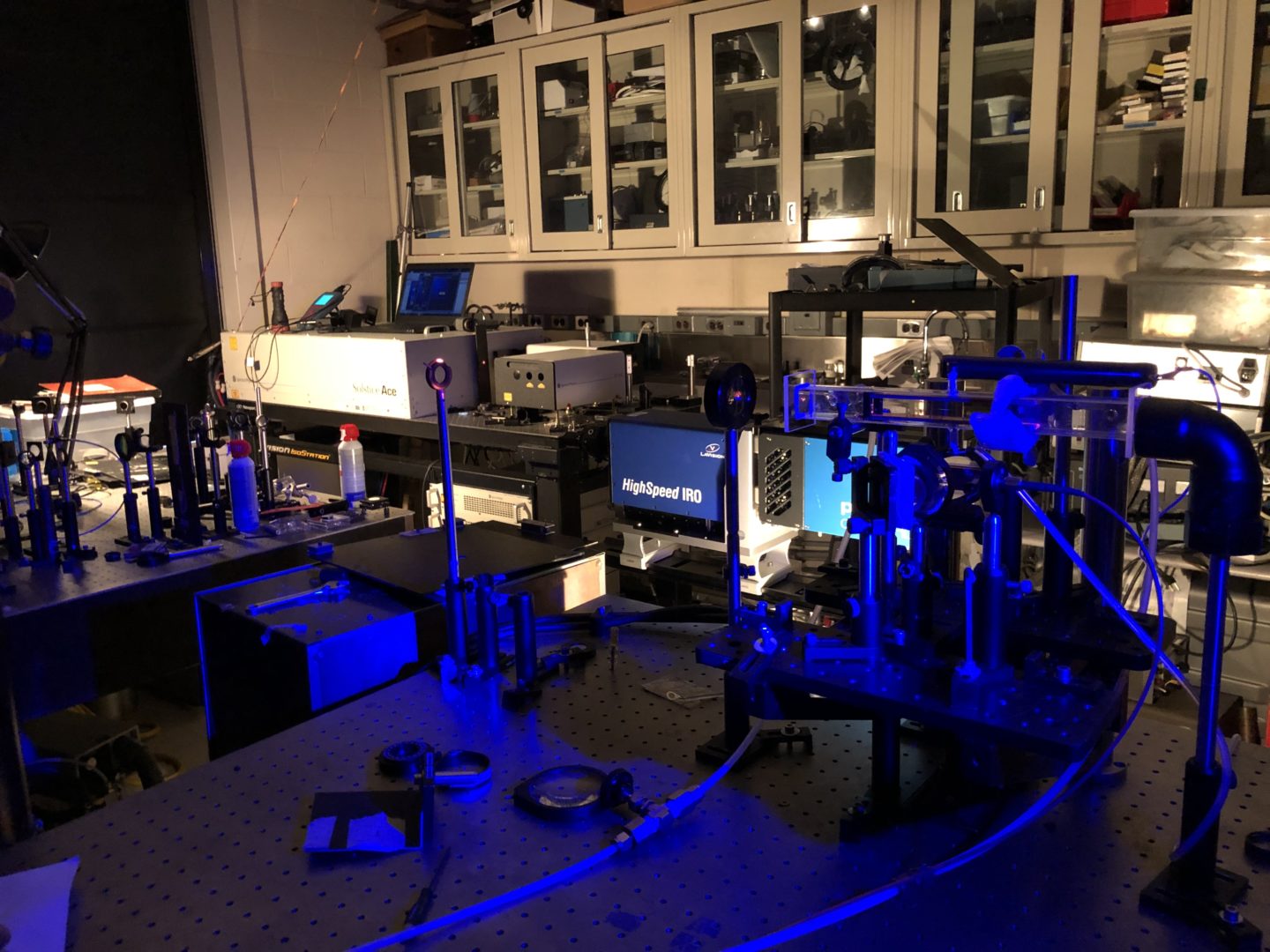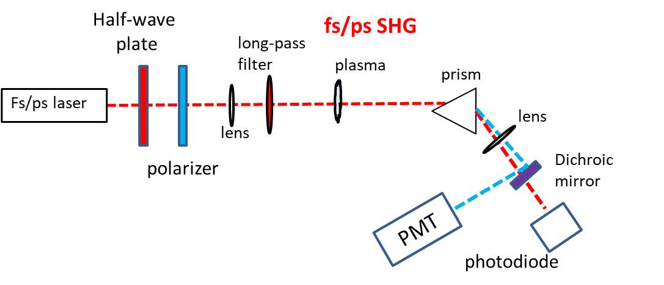Electric Field-Induced Second Harmonic Generation
Advanced Diagnostics Navigation
- Atomic and molecular species, positive and negative ions
- Laser-Induced Fluorescence (LIF) and Two-Photon Absorption LIF (TALIF)
- Radar Resonant Enhanced Multi-Photon Ionization (Radar REMPI)
- Characterization of plasma, chemical composition and dynamic behavior
- Electron velocity distribution function, gas flow velocity and temperature
- Electric field and space potential
- Nanoparticle Diagnostics
- Surface Diagnostics
Electric Field-Induced Second Harmonic Generation (E-FISH)

Developed at PU for remote optical measurements of electric fields in gases and plasmas [1,2], the fs/ps E-FISH method allows for local measurements with sub-ns temporal resolution of the electrical-susceptibility in a plasma by measuring the amount of second harmonic generated in the presence of an electric field. Previous results have shown that the E-FISH signal can monitor the temporal and spatial evolution of electric fields in plasmas and it can be a measure of the susceptibility. The sensitivity of E-FISH approach for E-field measurements down to 100V/cm at 1atm, and the ability of measuring susceptibilities at pressures below 50 Torr. The ps E-FISH employs a Coherent Legend Ti:Sapphire tunable amplified system capable of delivering 30 mJ laser pulses with 100 ps duration in the near infrared, which are focused into the interrogation region using a lens. The laser source for fs E-FISH is a 1 kHz Spectra-Physics Solstice Ace laser system, which produces 800-nm light with a pulse duration of 50 fs. The pump laser beam then travels through a long-pass hard coated dielectric in order to remove any second harmonic light previously generated due to the high intensity laser light incident upon the reflective surfaces of upstream optics. To increase the signal to noise ratio, the laser beam is polarized parallel to the applied field. The second harmonic light generated by the nonlinear interaction at the focus of the beam is spectrally separated from the fundamental light using a single dispersion prism before being re-collimated by a matched lens. The residual fundamental is filtered out by a series of short-wavelength pass and narrow-bandwidth filters placed in front of a photomultiplier tube, as well as an iris to block any scattered light from reaching the photomultiplier tube. To account for shot-to-shot fluctuations of the pump beam energy, a photodiode is used to collect and monitor the fundamental beam intensity after passing through the dichroic filter. The E-FISH signal is either collected by a Hamamatsu PMT, or it is imaged using a Princeton Instruments Pixis 512 cooled CCD camera.

- A. Dogariu, B. M. Goldberg, S. O’Byrne, and R. B. Miles, Phys. Rev. Appl., 7, 024024 (2017).
- B. M. Goldberg, T. L. Chng, A. Dogariu, and R. B. Miles, Appl. Phys. Lett. 112, 064102 (2018).
 This capability is located at the Princeton University Dept. of Mechanical and Aerospace Engineering.
This capability is located at the Princeton University Dept. of Mechanical and Aerospace Engineering.
